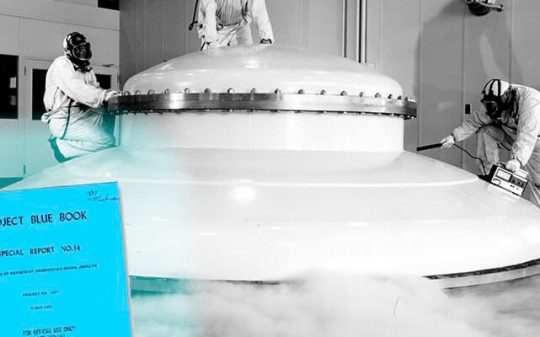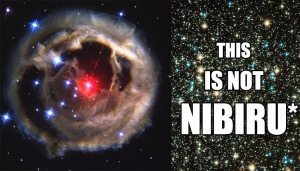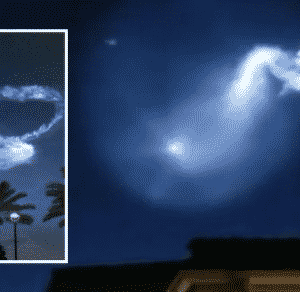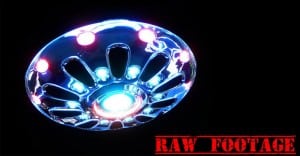On June 24, 1947, Kenneth Arnold, a reputed American aviator and businessman, witnessed a formation of vivid colored, crescent-shaped crafts hasting at speeds of over 1,200 knots in the vicinity of Mount Rainier, Washington. After comparing their flight with “a saucer when you skip it over the water,” the term “flying saucer” came into existence.
After this event, the public’s interest for the phenomenon quickly boosted, and soon after, the Air Force saw an increase in calls from people asking them to investigate what Arnold reported. The government began looking into this matter of UFOs or “flying disks” – as UFOs were usually referred to back then. However, early concerns of unidentified flying objects consisted in a possible Soviet invasion using advanced technology stolen from Nazi scientists captured during the war rather than an extraterrestrial invasion.
Being on the brink of a dangerous Cold War with Stalinist Russia, the government was afraid of a possible intrusion of the American airspace by technologically-advanced flying devices owned by the Russians, so they decided to reach into the matter for further clearance.
In late 1947, Project Sign was initiated by the Air Technical Intelligence Center at the Wright-Patterson Air Force Base. Believe it or not, Sign represented a genuine attempt to document “flying disks” in an exhaustive scientific manner, using some of the finest minds from the military and scientific community alike.
After analyzing the situation, the rumors of a possible Soviet invasion in their so-called “Horten disks” was quickly dismissed, along with the possibility of experimental American aircrafts. The report concluded that UFOs are likely to be real, and also extraterrestrial in nature. The Air Force seemed satisfied with Sign’s twelve months of intense investigation, so a final report was forwarded to the Pentagon where a heated debate about national security started.
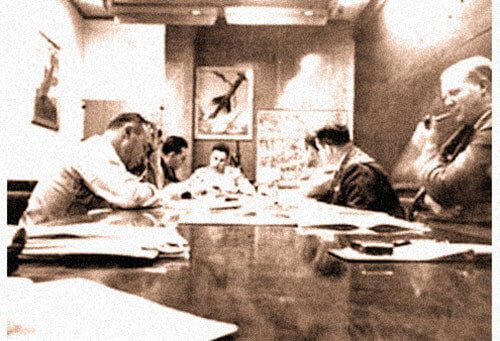
On one side were the Air Force officers who supported the novel idea of otherworldly visitors, while on the other were those who considered that such information should remain classified because it could stain the confidence that people have in the military. Because of the war threat, the Americans couldn’t risk to make this information public, so USAF Chief of Staff, General Hoyt Vandenberg had the documents erased and Sign dismissed.
Project Grudge took over Sign in 1949, its mission being deliberately debunking the UFO phenomenon in every possible way. Fearing an unprecedented public panic prior to the Roswell incident, USAF started dismissing all UFO sightings. Project Grudge presented them as regular aircrafts, weather balloons, meteors, optical illusions and other rational explanations.
Various civil academics supported the above mentioned, together with USAF Air Weather Service and United States Weather Bureau, and soon enough, Grudge started to ridicule the UFO phenomenon. It concluded that UFOs were nothing more than hoaxes set up by psychopaths to create mass hysteria, and even suggested that all sightings to be forwarded to the psychological warfare division. Sadly enough, after several solid UFO reports, the government aimed at debunking the entire phenomenon, all in the name of national security (or their wellbeing).

Project Grudge came to an end in 1952 when high-rank Air Force officials pressured the government to enhance the project because of an increasing number of unusual radar signals reported all over America. Captain Edward J. Ruppelt was assigned to this task, and Project Blue Book was then operational.
It continued to investigate the UFO phenomenon until 1969. By then, a total number of 12, 618 sightings were store in the Air Force archives, 701 of them remaining unexplained, including a sighting over New Mexico related by a police officer who claimed to had seen a flying disk marked with a red insignia and piloted by “child-like beings” that left scorch marks and lots of physical evidence behind.
